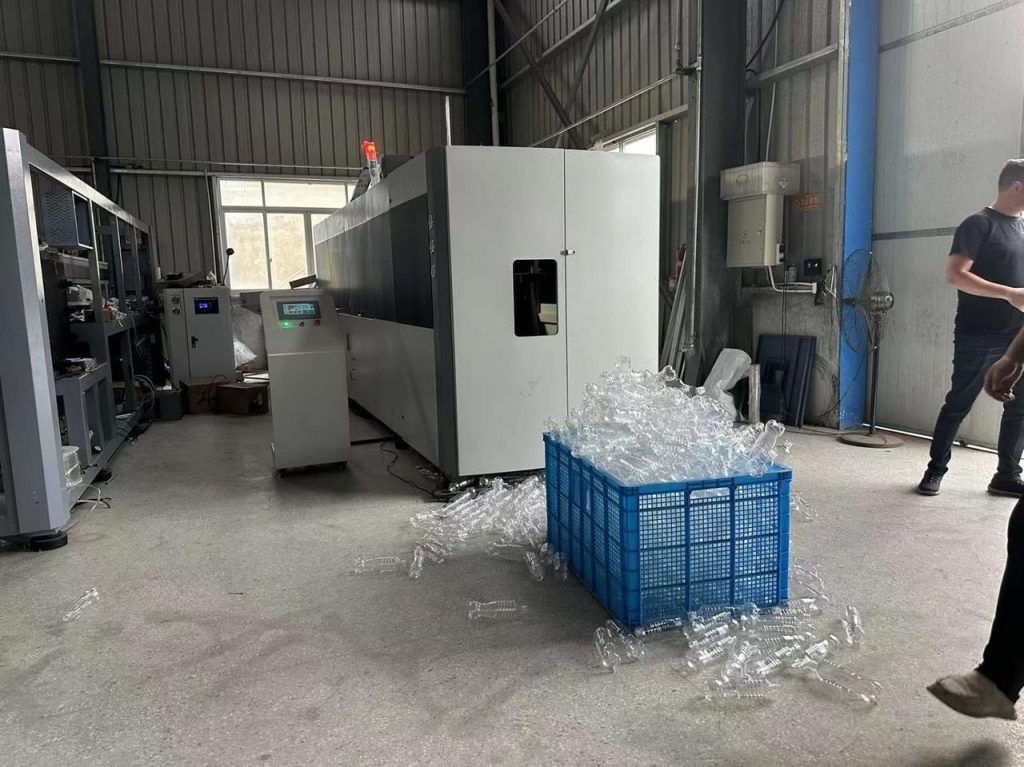
Have you ever wondered how plastic bottles, containers, and fuel tanks are made? The answer lies in Industrial Blow Moulding Equipment. This cutting-edge machinery has revolutionized plastic manufacturing, making it faster, more efficient, and cost-effective. Whether you’re an industry professional or just curious about how everyday plastic products come to life, this guide will break it down in simple terms.
Let’s dive in and explore everything you need to know about industrial blow moulding equipment!
1. What is Blow Moulding?
Blow moulding is a manufacturing process used to create hollow plastic parts by inflating a heated plastic tube inside a mould. It is widely used in industries such as packaging, automotive, and consumer goods to produce lightweight, durable plastic products.
2. How Does Industrial Blow Moulding Equipment Work?
Industrial blow moulding equipment works by heating plastic material until it becomes molten. This molten plastic is then shaped into a hollow tube (parison), which is placed inside a mould. Air is blown into the tube, expanding it to fit the shape of the mould, creating the final product.
3. Types of Blow Moulding Machines
- Extrusion Blow Moulding (EBM): Best for making bottles, containers, and tanks.
- Injection Blow Moulding (IBM): Ideal for small medical and pharmaceutical containers.
- Stretch Blow Moulding (SBM): Used for producing PET bottles and beverage containers.
4. Applications of Blow Moulding Equipment
- Packaging Industry: Bottles for water, soda, shampoo, and detergents.
- Automotive Sector: Fuel tanks, air ducts, and bumpers.
- Medical Industry: IV bottles, pharmaceutical containers.
- Consumer Goods: Toys, plastic furniture, and storage containers.
5. Key Components of a Blow Moulding Machine
- Extruder: Melts and shapes the plastic.
- Mould: Defines the shape of the final product.
- Air Compressor: Blows air into the parison.
- Cooling System: Solidifies the plastic.
6. Advantages of Using Industrial Blow Moulding Equipment
✅ High Efficiency: Produces large quantities in minimal time. ✅ Cost-Effective: Reduces material waste and production costs. ✅ Versatile: Suitable for various industries and applications. ✅ Lightweight & Durable Products: Ensures strength without added weight.
7. Materials Used in Blow Moulding
Commonly used plastics include:
- Polyethylene (PE) – Used for containers and tanks.
- Polypropylene (PP) – Found in automotive and food packaging.
- Polyethylene Terephthalate (PET) – Ideal for beverage bottles.
8. Step-by-Step Blow Moulding Process
- Plastic material is heated until molten.
- A tube (parison) is formed.
- The parison is placed inside a mould.
- Air is blown into the parison, shaping it.
- Cooling system solidifies the product.
- The final product is trimmed and ejected.
9. Choosing the Right Blow Moulding Machine
- Production Volume: High-volume production requires automated machines.
- Product Size & Shape: Different machines handle different sizes.
- Material Compatibility: Ensure the machine supports the intended plastic.
- Budget Considerations: Factor in initial cost, maintenance, and ROI.
10. Maintenance and Troubleshooting
- Regular cleaning and lubrication prevent breakdowns.
- Check air compressors and cooling systems for efficiency.
- Inspect moulds for wear and tear.
- Address leaks or material inconsistencies immediately.
11. Environmental Impact & Sustainability
Blow moulding is evolving with eco-friendly materials and recycling initiatives. Companies are investing in biodegradable plastics and closed-loop recycling systems to reduce plastic waste.
12. Future Trends in Blow Moulding Technology
- Automation & AI Integration – Smarter production lines.
- Eco-Friendly Materials – Focus on biodegradable plastics.
- Energy-Efficient Machines – Reducing power consumption.
13. Common Issues and Solutions
- Uneven Wall Thickness: Adjust mould temperature and air pressure.
- Bubbles or Defects: Ensure proper resin drying and cooling settings.
- Machine Downtime: Regular maintenance prevents unexpected failures.
14. Cost Considerations and ROI
- Initial Investment: Depends on machine size and technology.
- Operational Costs: Electricity, maintenance, and raw materials.
- ROI: Faster production and reduced waste improve profitability.
15. Final Thoughts
Industrial blow moulding equipment plays a crucial role in modern manufacturing. From water bottles to automotive parts, this technology enables high-speed production of high-quality plastic products. As industries move towards sustainable practices, innovations in blow moulding will continue to shape the future of plastic manufacturing.
Take Your Production to the Next Level! 🚀
Looking for reliable industrial blow moulding equipment to enhance your manufacturing process? Don’t settle for less! Get the best machines, expert advice, and unbeatable deals today.
👉 Contact us now for a free consultation and find the perfect blow moulding solution for your business!

